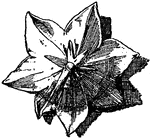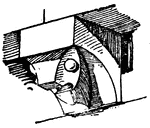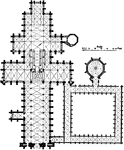
Plan of Louvre and Tuileries, Paris
The palais du Louvre in Paris, on the Right Bank of the Seine is a former royal palace, situated between…
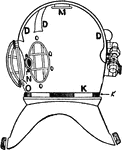
Diving Helmet (Side)
A side view of a diving helmet. K, Segmental neck rings; D, Air conduits; Telephone receiver; N, transmitter;…

Diver's Communication
An illustration of communication between a diver and the surface. Q, Battery with switch and bell in…
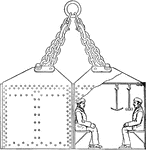
Diving Bell
A diving bell, also known as a wet bell, is a cable-suspended airtight chamber, open at the bottom like…

Ely Cathedral
Ely Cathedral (in full, The Cathedral Church of the Holy and Undivided Trinity of Ely) is the principal…

Singer Sewing Machine
"Singer sewing-machine. a is the frame and cloth-plate or bed-plate; b, arm; ... g, small driving-wheel…
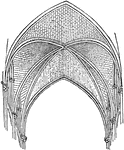
Sexpartite Vaulting
The Nave of Bourges Cathedral in France showing the sexpartite vaulting, divided into six parts.
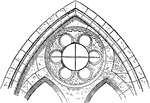
Clerestory
The "clearstory window of St. Leu d'Esserent, France" showing a sexfoil window, of six petals. -Whitney,…

Spinning Wheel
A frame with a spinning wheel in the foregroud. A ship can be seen on the left and a church steeple…
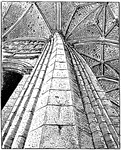
Refinement
"Architectural Refinement from Church of St. Quentin, France ... deviations from the geometrical…
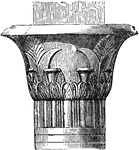
Capital in the Temple at Edfu
The capitals of the columns display an immense variety. The most beautiful have a crater-like form,…

Capital in the Temple at Edfu
The capitals of the columns display an immense variety. The most beautiful have a crater-like form,…

Capital in the Temple at Denderah
In some temples the pillars have, in lieu of capital, the face of a goddess, probably of Isis, with…
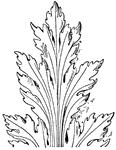
French Leaf Renaissance
The French Renaissance Leaf design tend to look more formal. This design was found in a church in Epernay…

Dolphin Frieze
The Dolphin Frieze is a part of a larger frieze found in Rome at the Arco della chiesa nuovo (the arc…

Satyr Mask
The Satyr Mask (Greek Mythological character) was designed during the Italian Renaissance by Sansovino,…
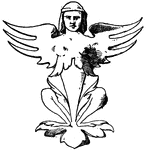
Winged Grotesque Pilaster
The Winged Grotesque pilaster is a squatting winged female without arms. It is found on the tomb of…
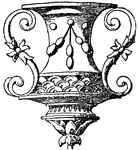
Large Vase
This large vase was designed for the tomb of Louis XII in the Church of St. Denis, France during the…

Gable of Church Cross
The gable of Church Cross is found in St. Urban's, Unterlimburg, Germany. It is used as a finial on…
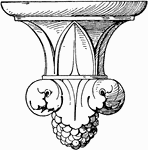
Bracket Piscina Pendant Knob
The bracket piscina pendant knob is found under the piscina of a church. It is a 16th century French…

Gothic Hinge
The gothic hinge is found on a church door in Viersen, Germany. It is an extended strap hinge that is…
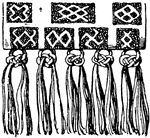
Medieval Maniple Valence
The medieval maniple valence is an embroidered band of silk that is typically worn by priests in the…
Decorated Shaft
The decorated shaft is found in a church in Tournus, France. It is a design of geometrical networks.
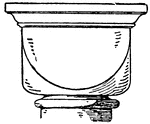
Romanesque Cushion Capital
The Romanesque Cushion Capital is found in St. Gereon's church in Cologne, Germany. It is a design of…

Late Gothic Capital
The late Gothic capital has an abacus that is octagonal with projected leaves. This capital has an appearance…

Late Gothic Capital
The late Gothic capital has an abacus that is octagonal with projected leaves. This capital has an appearance…
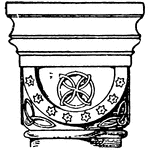
Romanesque Cushion Capital
This Romanesque Cushion Capital is found in the Abbey church in Germany. It is a design of a half sphere…
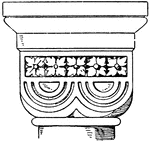
Romanesque Double-Cushion Capital
The Romanesque Double-Cushion Capital is an 11th century design found in the Rosheim church in France.…
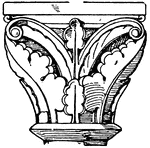
Romanesque Capital
This Romanesque capital is found in cloisters of a church. It is a simpler design that is reminiscent…
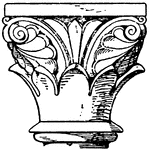
Romanesque Capital
This Romanesque capital is found in cloisters of a church. It is a simpler design that is reminiscent…
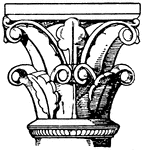
Romanesque Capital
This Romanesque capital is found in cloisters of a church. It is a simpler design that is reminiscent…

Wood Baluster
The wood baluster is an Italian Renaissance design that is found as stalls in the St. Maria Novella…
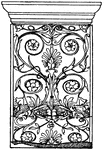
Renaissance Console
This Renaissance console is made out of marble. It is an Italian design found in the Santa Maria de…
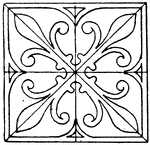
Gothic Square Panel
The Gothic square panel is a 15th century design of tiles found in Bloxham church, England.
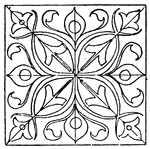
Renaissance Square Panel
The Renaissance square panel is a motif that comes from a robe in the St. Croce church in Florence,…

Renaissance Square Panel
The Renaissance square panel is an intarsia (wood inlaying) design found on the stalls of a church in…
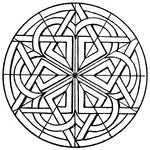
Romanesque Circular Panel
The Romanesque circular panel is a 12 century design found on the portal of the St. Laurence church…
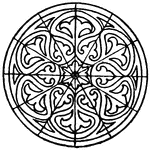
Marble Mosaic Circular Panel
This marble mosaic circular panel is found on the floor of the St. Vitale church in Ravenna, Italy.
St. Mark's Campanile
St Mark's Campanile is the bell tower of St Mark's Basilica in Venice, Italy, located in the square…

Giotto's Campanile
Giotto's bell tower (campanile) stands on the Cathedral square (Piazza del Duomo) in Florence, Italy.…
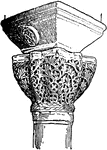
Byzantine Capitals
An illustration of a Byzantine capital from the the Church of St. Vitale, Ravenna. In several traditions…
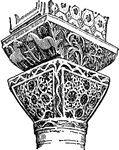
Byzantine Capitals
An illustration of a Byzantine capital from the the Church of St. Vitale, Ravenna. In several traditions…

Canterbury Cathedral
An illustration of the floor plan of Canterbury Cathedral. Canterbury Cathedral in Canterbury, Kent,…

Durham Cathedral
An illustration of the floor plan of Durham Cathedral. The Cathedral Church of Christ, Blessed Mary…

Ely Cathedral
An illustration of the floor plan of Ely Cathedral. Ely Cathedral (in full, The Cathedral Church of…

Chartres Cathedral
An illustration of the floor plan of Chartres Cathedral. The Cathedral of Our Lady of Chartres, (French:…

Sens Cathedral
An illustration of the floor plan of Sens Cathedral. Sens Cathedral, Cathedral of St. Étienne…

Angouleme Cathedral
An illustration of the floor plan of Angouleme Cathedral. A first cathedral was built on the site a…

Amiens Cathedral
The Cathedral of Our Lady of Amiens (French: Cathédrale Notre-Dame d'Amiens), or simply Amiens…
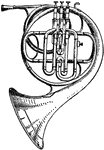
French Horn
The horn is a brass instrument consisting of about 12 feet (3.7 m) of tubing wrapped into a coil with…

Temple of Theseus
The Temple of Hephaestus and Athena Ergane, also known as the Hephaisteion or Theseion, is the best…
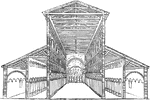
Old St. Peter's Basilica
"Section and Interior View of the five-aisled Basilica of S. Pietro at Rome, before its restoration.…
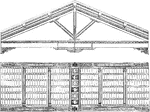
Profile of San Miniato al Monte
"Profile and view from beneath of the Rafters in the Christian Basilica of San Miniato at Florence.…
